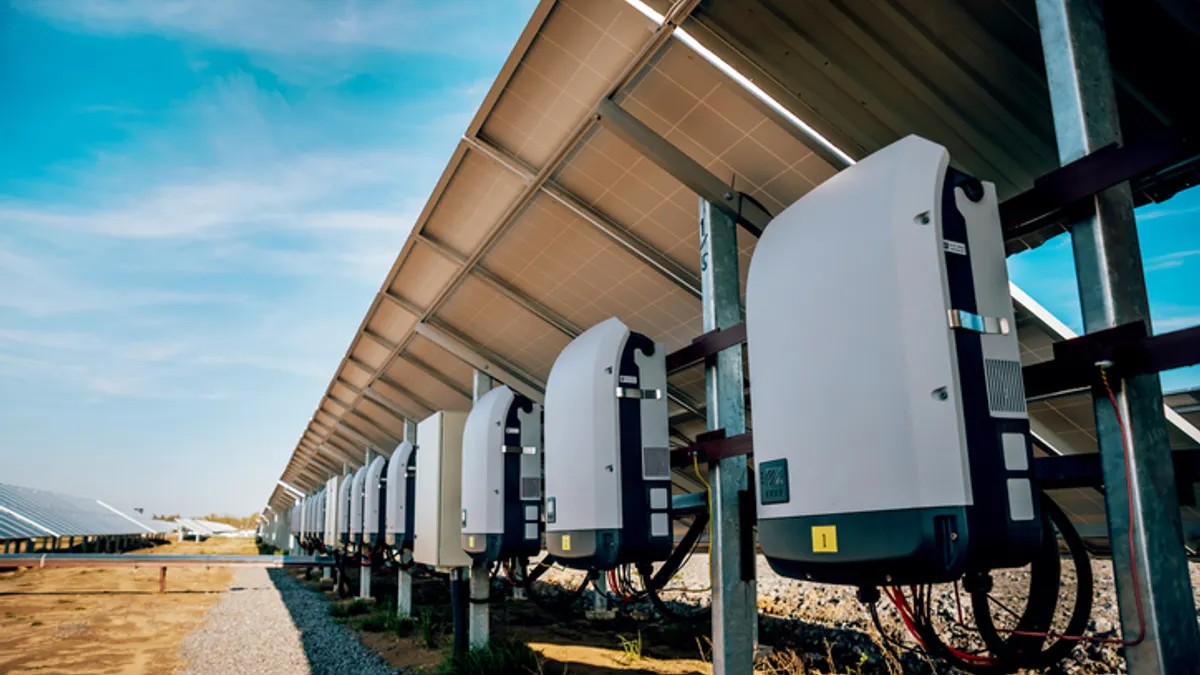Dive Brief:
- Dominion Energy South Carolina filed its modified integrated resource plan (IRP) on Friday, including a "preferred" scenario that would retire its coal generation fleet by 2030, and convert its Cope Station coal plant to natural gas.
- The majority of Dominion's scenarios included large blocks of solar and solar-plus-battery-storage added between 2030 and 2048, with the potential to add 2,000 MW of solar from 2026 to 2048, up from the 973 MW of utility-scale solar already contracted, as well as 700 to 900 MW of battery storage.
- Dominion submitted 14 different generation resource plans after regulators unanimously rejected its 2020 filing in December finding that the utility had misrepresented its fuel costs, and lacked demand side management resource options. The South Carolina Public Service Commission (PSC) specifically asked the utility to model an early retirement of its coal fleet, and three of Dominion's plans assume that scenario.
Dive Insight:
The utility favored a long-term resource plan that would retire large coal plants within a decade and add solar and battery storage resources, taking 1,709 MW of coal offline among three different plants.
Dominion Energy aims to have net zero carbon dioxide and methane emissions across all of its service territories by 2050.
"The modified 2020 Integrated Resource Plan presents alternative plans that provide customers a path to clean, renewable energy while allowing technologies to mature," Dominion spokesperson Paul Fischer said in an e-mail. "This modified 2020 IRP highlights details about how in recent years Dominion Energy South Carolina has reduced our dependence on coal generation, increased our percentage of solar generation, and created a cleaner generation fleet as a result."
Regulators knocked Dominion's original IRP for delaying storage additions and under-projecting the growth of renewable resources.
The preferred resource plan would add 100 MW of solar by 2028 and 300 MW more by 2032, as well as 100 MW of battery storage by 2032.
The largest near-term resource additions would be natural gas: 553 MW of combined cycle gas and 523 MW of large-frame internal combustion turbine units in 2028, in addition to replacing 415 MW of coal with natural gas at Cope Station by 2030.
"This replacement generation protects reliability and provides a base of dispatchable generation to support the addition of 1,900 to 2,000 [MW] of solar and 700 to 900 MW of battery storage from 2026 to 2048," the utility wrote in the modified filing.
"The plan also indicates that the most reasonable and prudent path for the company is a plan to retire Wateree and Williams stations in 2028. Natural gas, solar and battery storage resources would be added to the system ... Specific retirement studies are being prepared that will inform future decision making and will be presented in a future IRP." Fischer said.
Clean energy advocates hailed the modified IRP as a relief for the majority Black communities where these coal plants are located.
"These communities have fought long and hard for protections that others take for granted, and now there's hope for real change," Will Harlan, senior representative for Sierra Club's Beyond Coal campaign in South Carolina, said in a statement.
"But while we're very glad there's an end in sight for Dominion Energy's coal in South Carolina, adding fracked gas is a [shortsighted] move that means communities in Orangeburg County won't get the safe, clean energy they deserve — and we'll continue to support and work alongside them until they do," he said, referencing the dual-fuel Cope Station that would operate only on natural gas after 2030.
South Carolina regulators will make a determination on the revised IRP after the state Office of Regulatory Staff (ORS) submits a report on the "sufficiency" of the modified filing, according to Sierra Club Senior Attorney Dori Jaffe. The ORS, and other parties which may submit comments, must act within 60 days of the utility's submission, by April 20.














